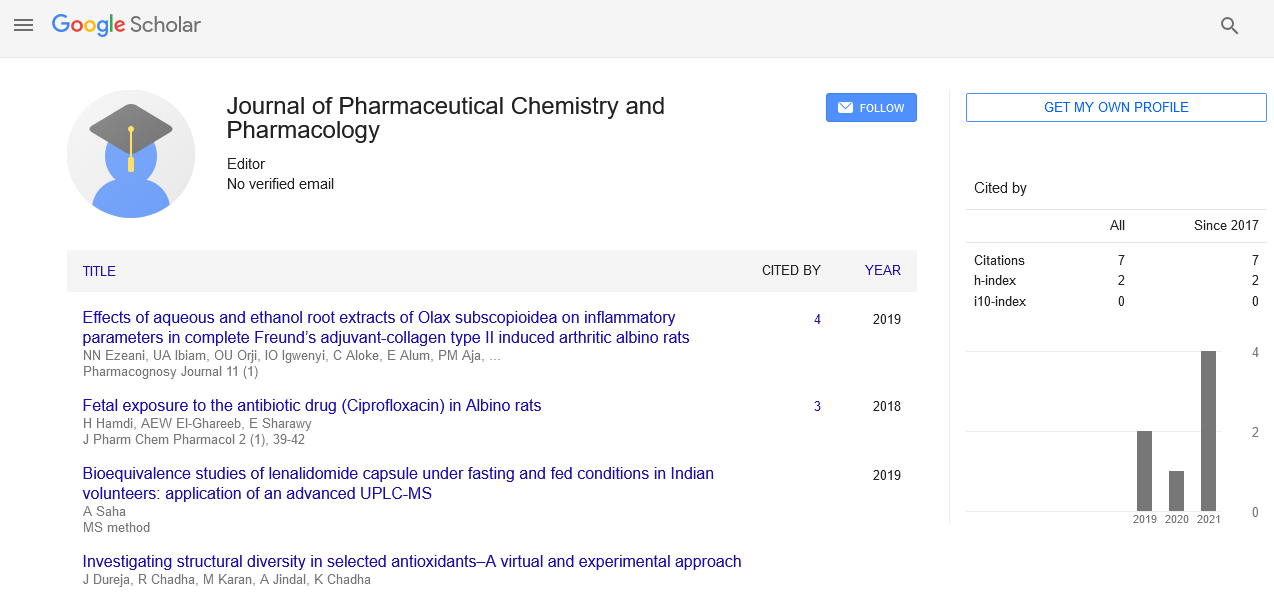Epilepsy…The well-known; yet a lot to be known…
Received: 15-Oct-2017 Accepted Date: Oct 17, 2017; Published: 19-Oct-2017
Citation: Nada MA. Epilepsy…The well-known; yet a lot to be known…. J Pharm chem Pharmacol. 2017;1(1):1.
This open-access article is distributed under the terms of the Creative Commons Attribution Non-Commercial License (CC BY-NC) (http://creativecommons.org/licenses/by-nc/4.0/), which permits reuse, distribution and reproduction of the article, provided that the original work is properly cited and the reuse is restricted to noncommercial purposes. For commercial reuse, contact reprints@pulsus.com
Despite being one of the most known neurological disorders of all age groups, still a lot to be declared about this disorder. From why some cells get hyper excitable and how abnormal connections are formed, till how bizarre symptoms arise.Historically, demonic possession and act of spirits were suspected to explain the strange symptoms of epilepsy. Even nowadays, not all symptoms of epilepsy are clear. Some epileptic semiology's are very bizarre reflecting the little we know about human brain. Focal non motor seizures are subjective experiences. Frontal hyper motor seizures can be wrongly diagnosed as agitations. Absence attacks can be mistaken as normal starring. Non convulsive status epilepticus cannot be easily diagnosed or differentiated from other types of coma.
The brain behaves in its peculiar way, giving rise to its own type of seizures. Because of that, we should suspect epilepsy in any recurrent, short lived stereotyped experiences weather conscious level clear or altered. Home videos and video EEGs can help us diagnosing those uncommon epileptic phenomena. But we should keep in mind that not all epilepsies can appear in the scalp EEGs and that if the epileptogenic zone (source area) is less than 10 cm2; it will not show in the scalp EEG. Also the source location, source orientation, amplitude and synchrony affect the ability to visualize epileptogenic activity in the scalp EEGs. This means that some epileptic patients can be easily missed if only depending on the scalp EEGs. Clinical suspicion from experienced medical team can use more sophisticated tools to prove epilepsy.
In our clinical practice, we sometimes face patients in whom we suspect epilepsy but cannot categorize their symptoms to the well-known epileptic classifications. Their EEGs if positive for epileptogenic discharge will put us in the puzzle: to treat or not to?
The abnormal EEGs reflect the malfunction of the neurons and can hinder the normal neuronal activity especially when frequent. Those also can disrupts the normal brain connectivity and interfere with natural circuits. Normalization of those EEGs is thus mandatory to restore brain functions. The most devastating example of how interictal Abnormal EEGs can affect brain functions is epileptic encephalopathy in which cognitive functions may be permanently affected and even with the use of steroids or other regimens. This reflects that abnormal synaptogenesis can be permanent, and irreversible.
Here are suggestions of what you should do before considering those as epileptic phenomena:
• First, those are symptomatic patients and not accidently.
• Second, the EEG abnormalities should be evident and repeatable.
• Third, family history of epilepsy can raise suspicion.
• Fourth, the presence of any cognitive abnormality; concurrently with the suspicious symptoms also raise possibility of epilepsy.
If the first and any of the other three items are fulfilled, I think we should treat. Naming of those conditions as epilepsies or epileptic equivalents; is an issue to be discussed. I think it is clear that our choices of therapy should include those therapies with little or no cognitive side effects, and we should maintain our serum levels within considerable limits.
From my practice as a pediatric neurologist, I have seen patients of some of these possible syndromes. I have published one paper about one of those and others are in their way to be published.





